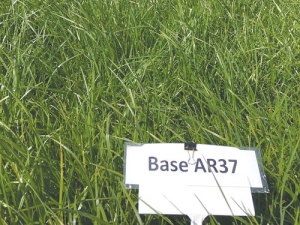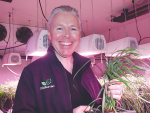It is no secret that the cheapest form of feed on New Zealand dairy farms is home grown pasture.
Optimising pasture grown on farm and ensuring as much of that available pasture is utilised is the main driver of profitable dairying. That said, there are challenges in the persistence and performance of pastures if critical steps are missed when establishing and managing pasture.
Droughts and associated pest and weed issues have placed considerable pressure on ryegrass performance and persistence in many regions. While challenging seasons are nothing new to farming, it is often a combination of factors, coupled with production expectations, that are placing demands on our pastures like never before.
While the challenging seasons are beyond our control, it is worth considering the four major factors that contribute to pasture production and persistence: soil fertility, pests and disease, grazing management and moisture. Effective pasture management encompasses these four key factors, and although moisture is often not in our control, we can influence these other factors.
Soil fertility is the foundation to a good pasture, and it is important to understand the soil fertility status when considering your choice of cultivar. The highest yielding cultivar is often not the best choice for a challenging situation.
Poor fertility soils will not result in a productive long lasting pasture. But not all grasses are made equal, so for more challenging environments hardier cultivars such as Rely AR37, which can tolerate lower fertility, and set-stocking type grazing management, will be a better option. In comparison, our high performance cultivars such as Excess AR37 and Base AR37 require medium-high fertility to best support pasture production.
There can be huge variations in pest populations over different seasons, within different regions and even with different paddocks on an individual farm. Use several pest management tools when establishing a new pasture, such as insecticides, cultivation techniques, slug bait, and in particular the use of seed treatment and appropriate endophyte.
Endophyte will set the pasture up for protection against key insects. Choose AR37 endophyte for the most comprehensive control of major pasture pests including black beetle, pasture mealy bug, Argentine stem weevil, root aphid and porina caterpillar.
After selecting the correct endophyte for your region and establishing that soil fertility level is optimum, grazing management will have a critical effect on pasture production, pasture utilisation and ultimately a profitable dairy system.
It begins with setting up new grasses well to encourage a strong and dense sward. This will go a long way in setting pastures up to both perform and persist.
How to set up your grass for long life
- Sow seed into a fine and firm seed bed when soil moisture and soil temperature are favourable to germination (sow no deeper than 10mm to allow clover to establish)
- Ensure the first grazing is only a light graze at 6-8 weeks (once pasture passes the ‘pull test’)
- This encourages the plant to tiller and also assists clover establishment by allowing more light into the base of the sward
- Short sharp grazings through the winter. Leaving the pasture long will cause the new daughter tillers to be shaded out and die, reducing the density of the pasture. Graze to keep sward below 300mm in height
- Applying small doses of nitrogen fertiliser after the first couple of grazings will also encourage tillering
- Don’t cut for hay or silage in the first year.
- Many of the recommendations on new pasture management continue to apply after establishment,
as persistence requires maintaining tillers and root mass. A well-established pasture will be more resilient to typical seasonal stresses and grazing requirements. During challenging seasons, timely and appropriate adjustments of stocking rates, grazing residuals and round lengths are essential for recovery and persistence.
Pasture management techniques may also vary depending on the ploidy of the pasture. Tetraploid pastures such as Base AR37 are typically more palatable given their higher cell contents to cell wall ratio, which simply means in comparison to a diploid pasture they are naturally higher in sugars.
This can result in increased animal intake and therefore improved pasture utilisation compared to a diploid pasture, although this does increase its susceptibility to being overgrazed, so ensure residuals are managed.
Moisture is the final factor that influences the performance of a pasture, and is often one we cannot control unless we have irrigation.
Taking control of those variables that we can influence will increase the performance and longevity of our pastures.
This ultimately will drive the optimisation of pasture grown and utilised onfarm and lay the foundation to increase profitability.
Article supplied by PGG Wrightson Seeds.











